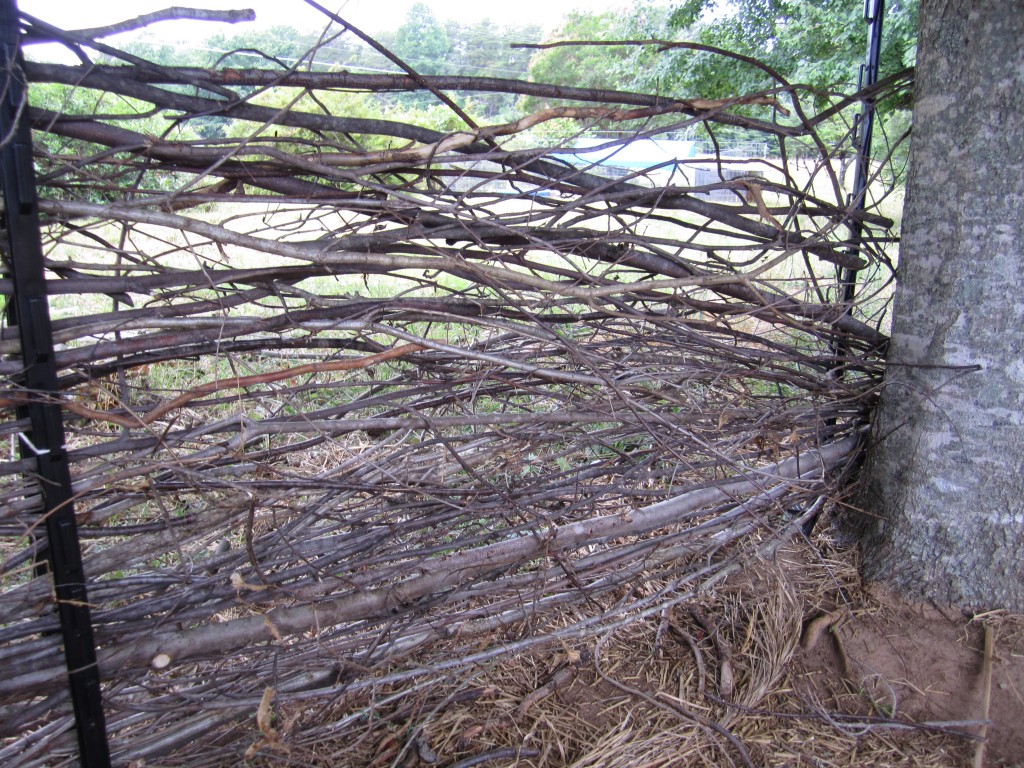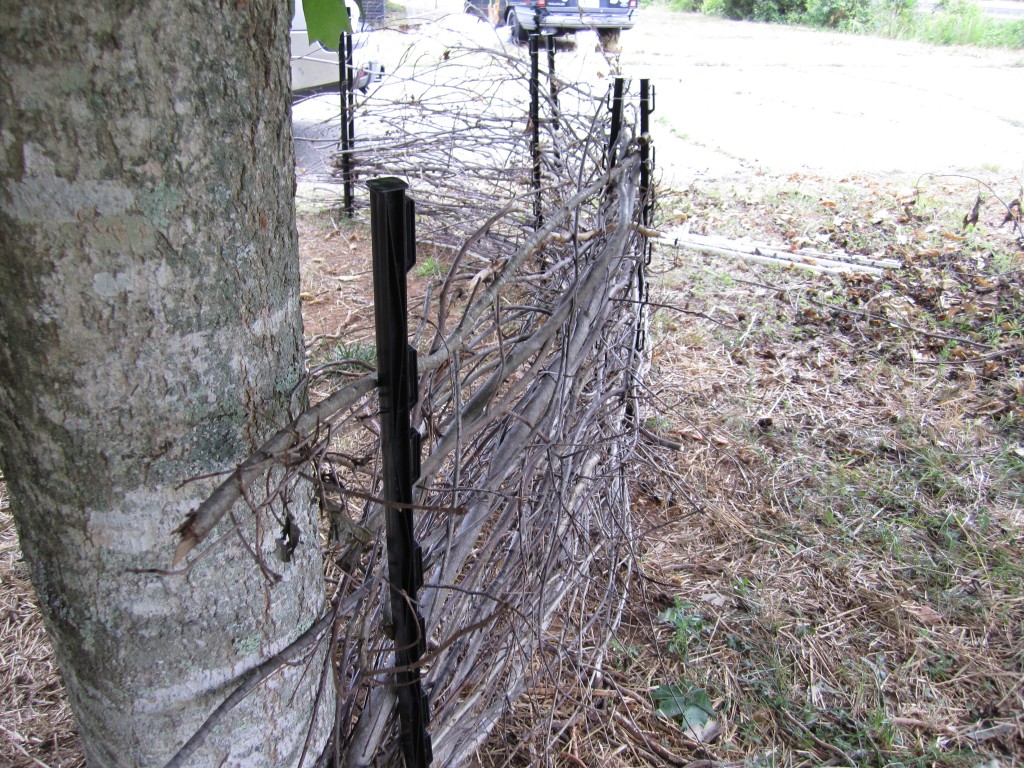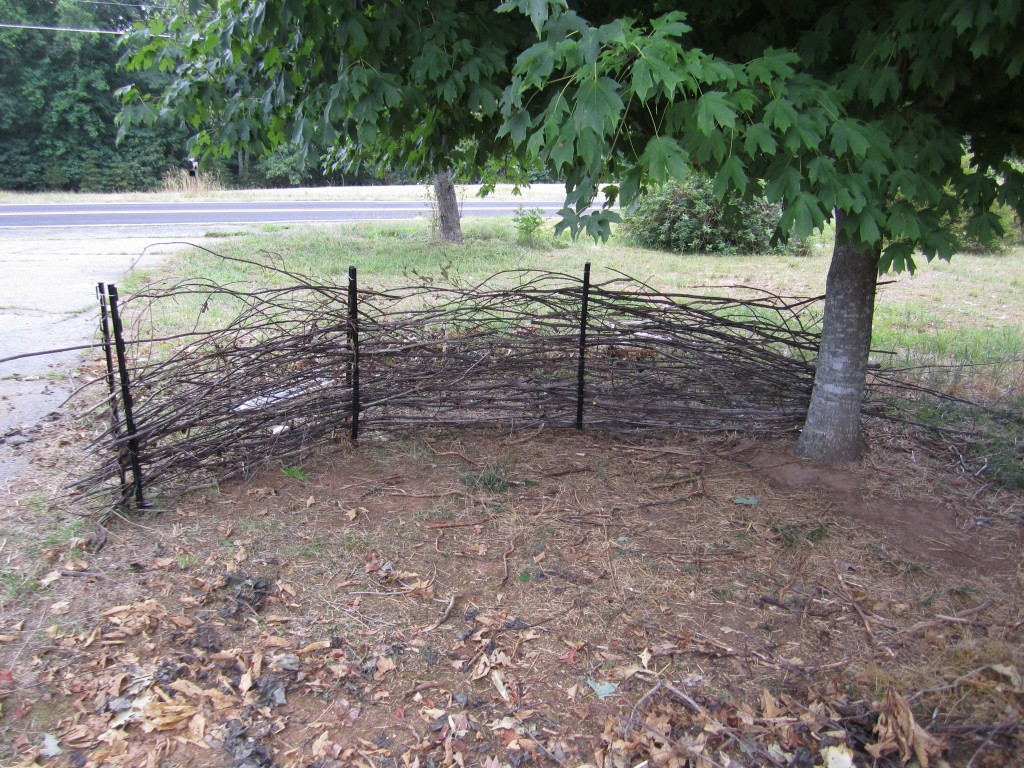Part of the process of clearing land is dealing with the abundance of small trees, branches and other woody material. On our property, we try to utilize as much of the wood as possible, either by burying the wood to make hugelkulture raised beds, dropping it as rough mulch, piling it in gullies to slow erosion, or as firewood. But the other day we came up with another way to use this surplus…wattle fencing.
Wattle fencing is an ancient technique that farmers, peasants, and the rest of humanity have utilized for hundreds of years. At it’s most basic level, it involves weaving long, thin pieces of supple wood around upright posts to form a solid fence. We decided that a wattle fence would be a great way to make an attractive dog enclosure for Bridey in our front yard under a nice shady maple tree. Much more appealing than the chicken wire paddock she has now.

The natural variation among the different sizes and types of wood looks great in our homemade wattle fence.
Traditionally, coppiced woods like hazel, willow, and chestnut were used for both the vertical poles and the horizontal weavers, but we used the mixture of woods that we had piled up from our recent clearings, mainly oak, poplar, tree of heaven, and some maple. For uprights, we used fiberglass step-in-posts that are used for electric fencing and portable poultry netting. We decided on a circular shape that matched the shadiest area beneath the tree, and placed pairs of posts a few inches apart, every 4-5 ft to hold the fence together. We then slid the long pieces of wood between the pairs of posts, following the natural curve of the branches, and weaving the supple twigs together to form a pretty weave that is simple, strong, and sturdy.

We used step in posts to keep the wood in place, but next time we will probably just use wooden posts.
This is actually a lot of fun, and is half puzzle, half art project. Our mix of woods makes for a rustic look, and we are already planning where else we can build some wattle fencing, but first we’ll have to finish Bridey’s new dog pen. In the future we will definitely use wooden posts for a more authentic feel, most likely digging with a post-hole digger and setting the uprights in place like corner posts. Either way, wattle fencing is an age old technique, but a beautiful one that modern homesteaders should consider when designing and laying out their property.
